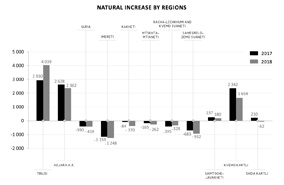Demographic statistics of Georgia
By Levan Abramishvili
Wednesday, May 1

The population of Georgia equaled 3 723 500 persons, which is a 0.2 % decrease from the previous year.
58.7 % of the population lived in urban settlements and almost one-third of the total population lived in the capital Tbilisi (approx. 1.2 million)
Other highly populated regions include Imereti with approx. 500 thousand persons, Kvemo Kartli with approx. 433 thousand and Autonomous Republic of Adjara with approx. 350 thousand persons (the total breakdown of the number of population by regions and urban/rural settlements is presented in table 1).
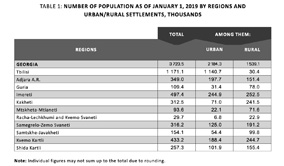
The age and sex make-up of the population are as follows: persons aged 0-14 equaled 20.3 percent. As for the share of the working-age population (15-64 years old), it totaled to 64.9 %, while the share of elderly (65 years and older) was 14.8 percent (for a detailed overview see the age and sex pyramid).
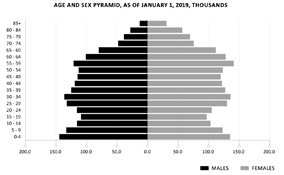
Compared to the previous year, the number of the male population remained almost unchanged and equaled 1 790.9 thousand persons, while the number of the female population decreased by 0.3 percent and totaled 1 932.6 thousand persons.
According to GeoStat, the sex divide of the Georgian population is 48 % male and 52 % female.
The sex ratio (number of men per 100 women), equaled 92.7. Under the age of 35, the number of men exceeds that of women, while women outnumber men in the age group of 35 and over, due to females’ higher life expectancy.
In 2018 the life expectancy at birth equaled 74.0 years, including 69.7 years for males and 78.2 years for females and the median age of the population totaled 37 years.
The GeoStat report also provides interesting numbers regarding migration in Georgia.
Compared to the previous year, in 2018, the number of emigrants increased by 15.8 % and amounted to 98 935 persons. The number of immigrants increased by 5.9 % and totaled 88 152 persons. 86.6 percent of emigrants and 84.5 percent of immigrants represent the working age population (for a detailed overview of migration by the main age groups see the chart).
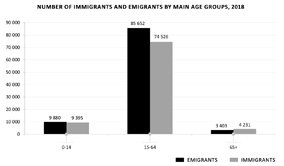
Last month, GeoStat also published a report on vital statistics in 2018 (accumulated data gathered on live births, deaths, marriages, and divorces).
The number of registered marriages equaled 23 202 in 2018, showing a 2.0 percent decrease from the previous year.
The number of live births equaled 51 138 in 2018 (26 538 male and 24 600 female babies), registering a 4.0 percent decrease from the previous year. Compared to 2017, the sex ratio at birth remained unchanged – male births per 100 female births equaled 107.9.
In 2018, the largest number of live births was recorded in Tbilisi (16 161) while the smallest – in Racha-Lechkhumi And Kvemo Svaneti Region (328).
Compared to 2017, in 2018 the share of the first child in total births decreased by 1% (from 38.9 to 37.9 percent). Consequently, the share of the third and next order child increased from 22.6 percent to 23.4 percent, while the share of the second child remaining almost unchanged (see the chart for the details about live births by order).
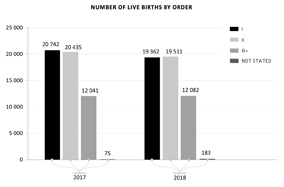
In 2018 the number of deaths decreased by 2.7 percent in annual terms and totaled 46 524 persons. Similarly to the birth statistics, the largest number of deaths was recorded in Tbilisi (12 122) while the smallest – in Racha-Lechkhumi and Kvemo Svaneti Region (656).
In 2018 the natural increase (the difference between the number of births and the number of deaths) equaled 4 614 decreasing by 15.7 percent year-on-year (for detailed natural increase by regions see the chart).
